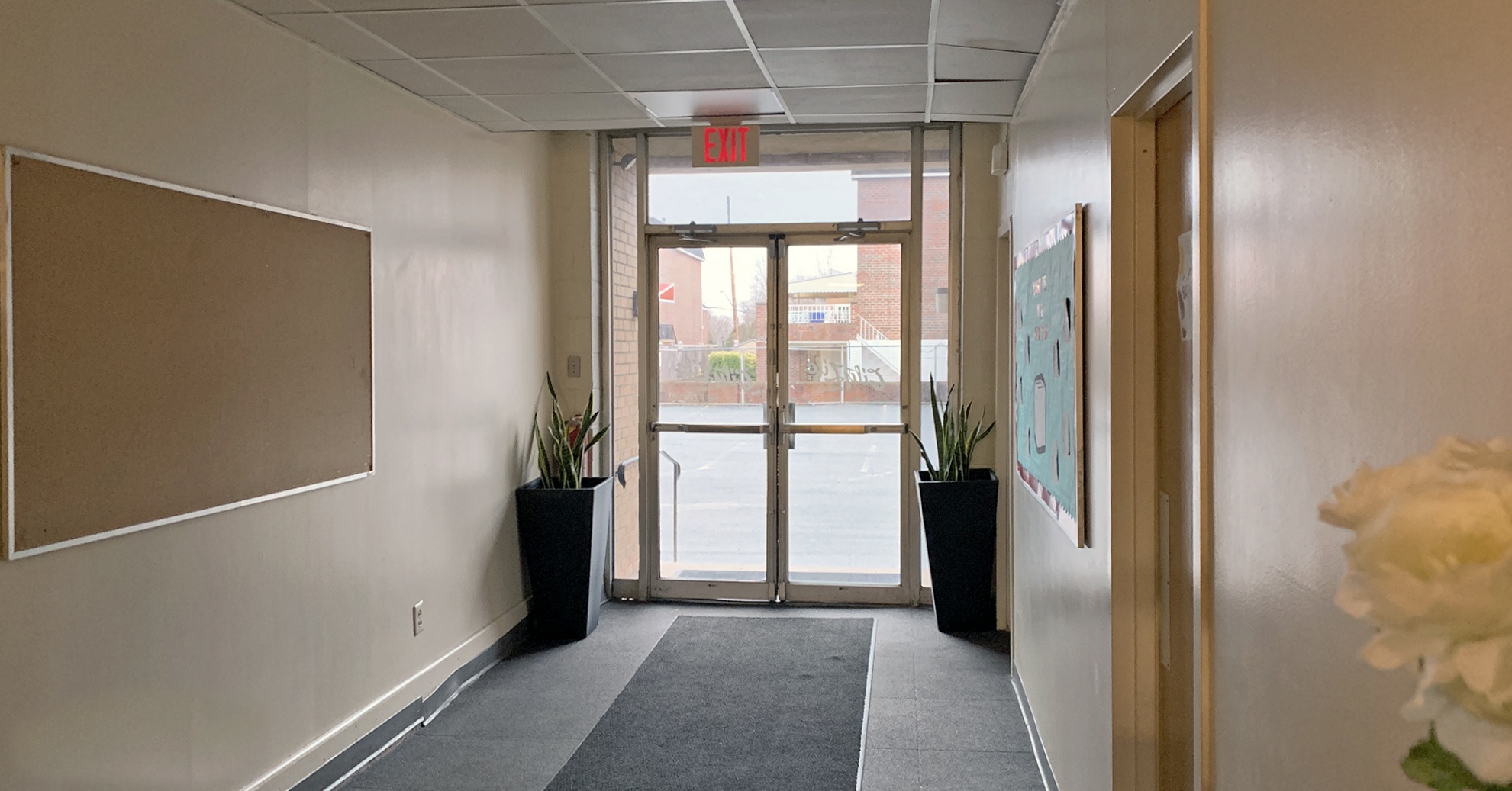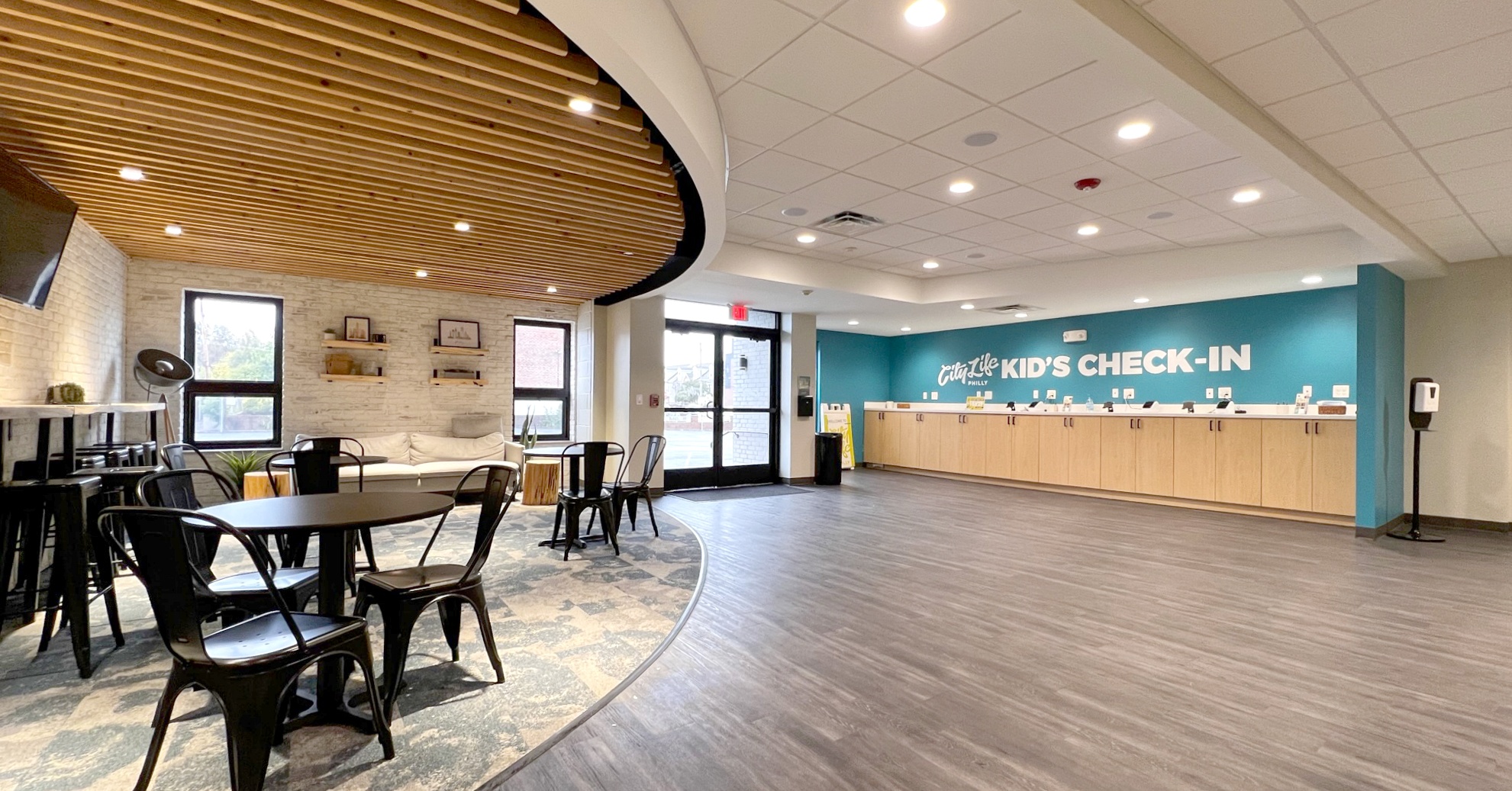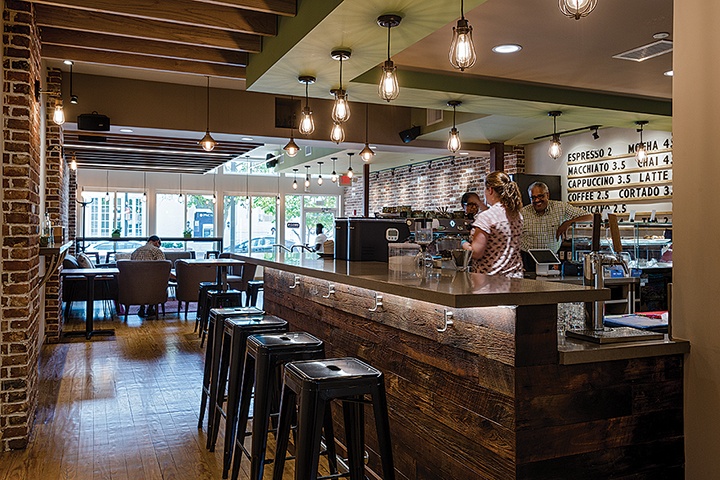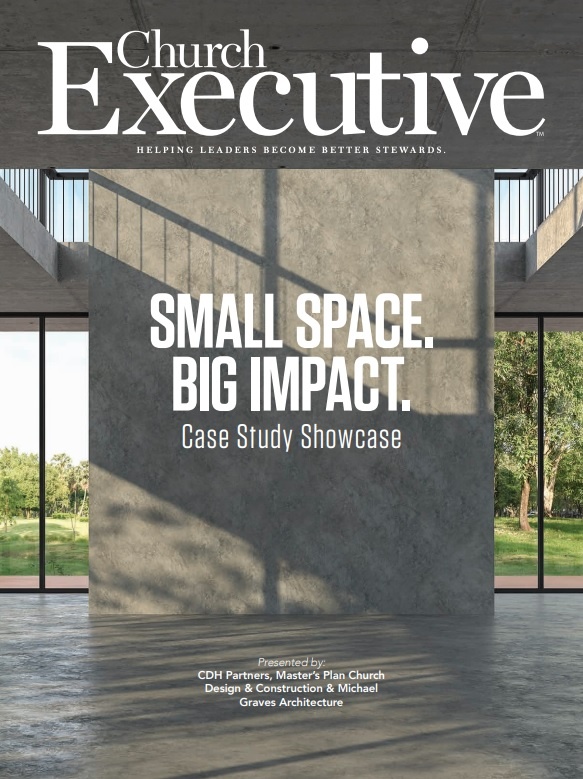 Designing a user experience that supports the vision and ministry of the facility — on a budget
Designing a user experience that supports the vision and ministry of the facility — on a budget
By Ravi Waldon, AIA, LEED AP
Looking at the really amazing spaces in church design magazines certainly can make one drool. It’s all wonderful if the church has a vast budget, unconstrained land, and a lot of resources.
But how does a ministry do something creative when there’s only a small space to work with and a tight budget?
The challenge calls for a lot of creativity, to be sure, along with a willingness to lean into elements of design that deliver the most “bang for the buck.”

City Life Philly, before
Keys to pulling it off successfully
If you haven’t yet acquired your space and are looking around, an architect can provide a quick study for how much space is needed. Before signing on the dotted line for a lease or purchase, careful due diligence is needed; sometimes a good deal really is too good to be true. In many spaces — such as office spaces, flex warehouses, food stores, or any other non-assembly building — you can run into a buzzsaw of code issues due to the change of use or work needed to bring the building up to current codes. Such tripwire issues commonly include upgrading the HVAC systems, ensuring adequate electrical power, or adding building accessibility.

City Life Philly, after
Reimagining a tired building for vibrant ministry
City Life Philly is a wonderful example of a multiple-small-spaces-on-a-modest-budget project done right. City Life purchased a 1950s building for use as a school and church. Inside, it was dark, its floors were badly settling, and the whole vibe of the building simply didn’t reflect the vibrant, energetic ministry serving South Philly.

Ragamuffins, before
Over a period of a few years, the church did four small projects that have essentially transformed the facility. The goals were to create a fellowship environment that’s more welcoming, open and has more natural light, and to improve the endless tight halls of the old-school design.

Ragamuffins, after
The first project involved transforming the worship space. Adding lighting and removing the antiquated ceiling — for a more “tech” vibe — went a long way towards updating the tired auditorium. One complication was maintaining a safe exit from the balcony, which was all but abandoned for a more intimate worship venue. In addition to updated AVL, seats were reupholstered and the old carpet removed.

The second project was perhaps the most disruptive, since the building had a curved, six-foot hallway and a very restricted entry. The new design opens up the lobby and hallway into a single, more welcoming space. This change in the masonry walls was the most expensive part of the work, but also the most impactful in breaking up the closed-in feeling of the building. It allows natural light to flow deeper into the interior of the building at the front primary entry.
The secondary side entry — which is heavily used as the children’s entry — opens into a wide-open children’s check-in area that’s friendly and secure. On the opposite side of the building, youth spaces were upgraded mostly by removing old finishes and using sealed concrete, color, and graphics.
Each of these projects was done separately. Working in existing spaces presents potential for disruption of the ongoing functions, but the contractor was sensitive to the need to use the building on Sundays and was expeditious in its pace of work.
Church/community space done right
Another example of a small-scale, big-impact project is our firm’s work for Ragamuffins, a church for 50 congregants who sought to be ministering in their small town. This 4,000-square-foot space allowed for a coffee shop (with the best coffee around, by the way!) on the first level and a community space on the lower level for small exercise classes, concerts, or Sunday worship.
This project was done on a highly restricted budget and developed in a very “vanilla” tenant space; simple choices of color and materials gave it an old-building feel, which the church really wanted. The key for such a design is to focus on one solid design idea and not be too ‘scattered’ in the use of multiple design notions.
Whether large or small, or a building conversion or tenant-space improvement, the common attributes of a successful design are forethought and creativity in the use of color, light and space.
Ravi Waldon, AIA, LEED AP is Principal and Faith-Based Practice Leader at Michael Graves Architecture.


